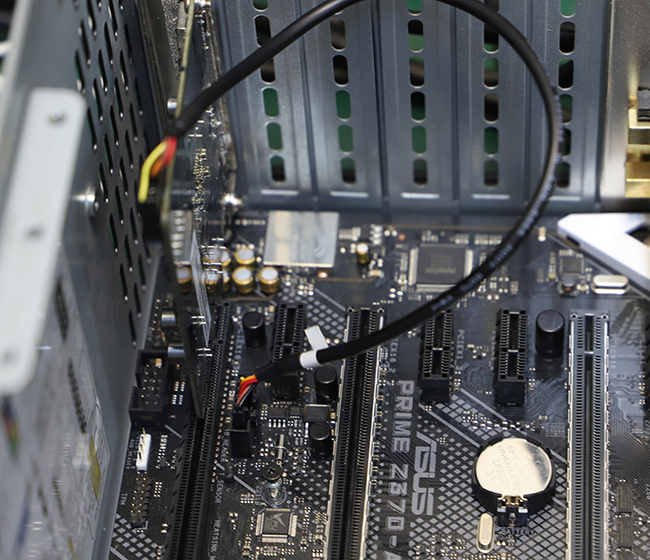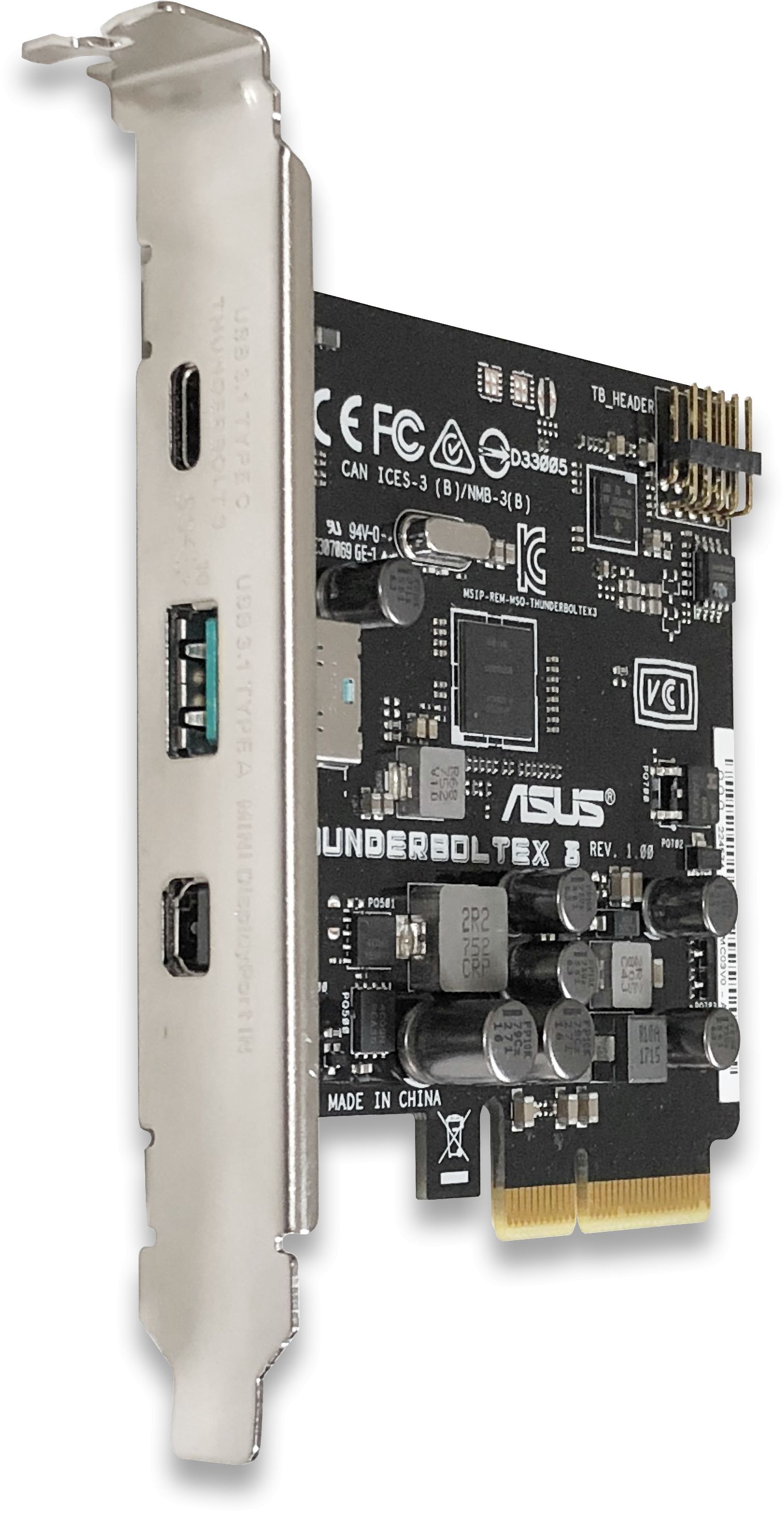


- Thunderbolt add in card no thunderbolt header update#
- Thunderbolt add in card no thunderbolt header full#
This cause of this problem is that all Thunderbolt Add-in cards by default power up at security level “SL1” which means users have to manually approve attached peripherals. Common Problem #2: When peripherals are connected at boot time, they’re not detectedīut if I subsequently unplug it, and plug it back in, then it works? These cards will need some more initialisation that I’ll be looking at in future. I have noticed that some (Alpine Ridge for example) cards come up with a PCI Vendor/Device ID of 0xFFFF/0xFFFF which would mean that they wouldn’t be enumerated by the system. This is likely to differ for other cards.

Jumpering the GC-TITAN RIDGE into action. In some cases a separate +3.3V supply will need to be applied (via a 10K resistor for example) to the “force power” pin, which on the GC-TITAN RIDGE is pin 1. It will not necessarily work for every AIC. This modification works thanks to a weak pull-up on the input at pin 3 meaning there is +3.3V present. Pin 1 is clearly marked on the connector as being at the top of the card, and in the drawing of the connector. Note that you are actually shorting pins 1 and 3. On the Gigabyte GC-TITAN RIDGE (one of the most popular cards for Thunderbolt hacking) it is regularly reported that you can “short pins 3 and 5”. One of the pins on the mystery Thunderbolt header interface on the rear of the card is an “enable” (technically ‘force power’) signal. Common Problem #1: It doesn’t work at allĬard not detected, nor any attached devices, nada. I have spent the past few evenings trawling through many forums, reading about the many different experiences people are having, and have also purchased some hardware to play around with myself, so we can dig into these problems and see what (if any) solutions there are.
Thunderbolt add in card no thunderbolt header full#
It’s not a secret that these cards may work in a motherboard which isn’t supported, but full functionality is not a given. Apparently regular looking PCIe expansion cards, but shipped with a mystery interface cable to the motherboard, of which there is a small list of supported models. I’ve long been intrigued by Thunderbolt add-in cards. The situation is no better for Thunderbolt 4 however some technical details differ from what is written on this page. Since we’ve mentioned 10 different models of Thunderbolt 3 PCIe Cards on the above list, it may be difficult for you to find the right one for your needs.This article concerns Thunderbolt 3 add-in cards.
Thunderbolt add in card no thunderbolt header update#
Last update on at 18:08 / Affiliate links / Images from Amazon Product Advertising API Top Rated Thunderbolt 3 PCIe Card Reviews Sonnet Echo III Desktop a 3-Slot Desktop Thunderbolt 3 to PCIe Card Expansion System GIGABYTE (Alpine Ridge Thunderbolt 3 PCIe Card Components Other GC-Alpine Ridge Highpoint RocketStor 6661A Thunderbolt 3 to PCIe 3.0 X16 Expansion ChassisĪSUS ThunderboltEX 3-TR Expansion Card for Z490 (Intel 10th Gen CPUs)motherboard (PCIe 3.0 x4.ĪSUS Expansion Card for Z170 & X99 Motherboards ThunderboltEX 3 Sonnet Echo Express SEL Thunderbolt 3-to-PCIe Expansion Chassis (1 low profile slot) QNAP Thunderbolt 3 Expansion Card for TVS-h1688X and TVS-h1288X NAS (QXP-T32P) Sonnet Echo Express SE1 Thunderbolt 3 Expansion Chassis (ECHO-EXP-SE1-T3) Sonnet Echo Express SEIIIe Thunderbolt 3 Edition (3-Slot PCIe Card Expansion Chassis) GIGABYTE GC-Titan Ridge 2.0 (Titan Ridge Thunderbolt 3 PCIe Card Component)


 0 kommentar(er)
0 kommentar(er)
